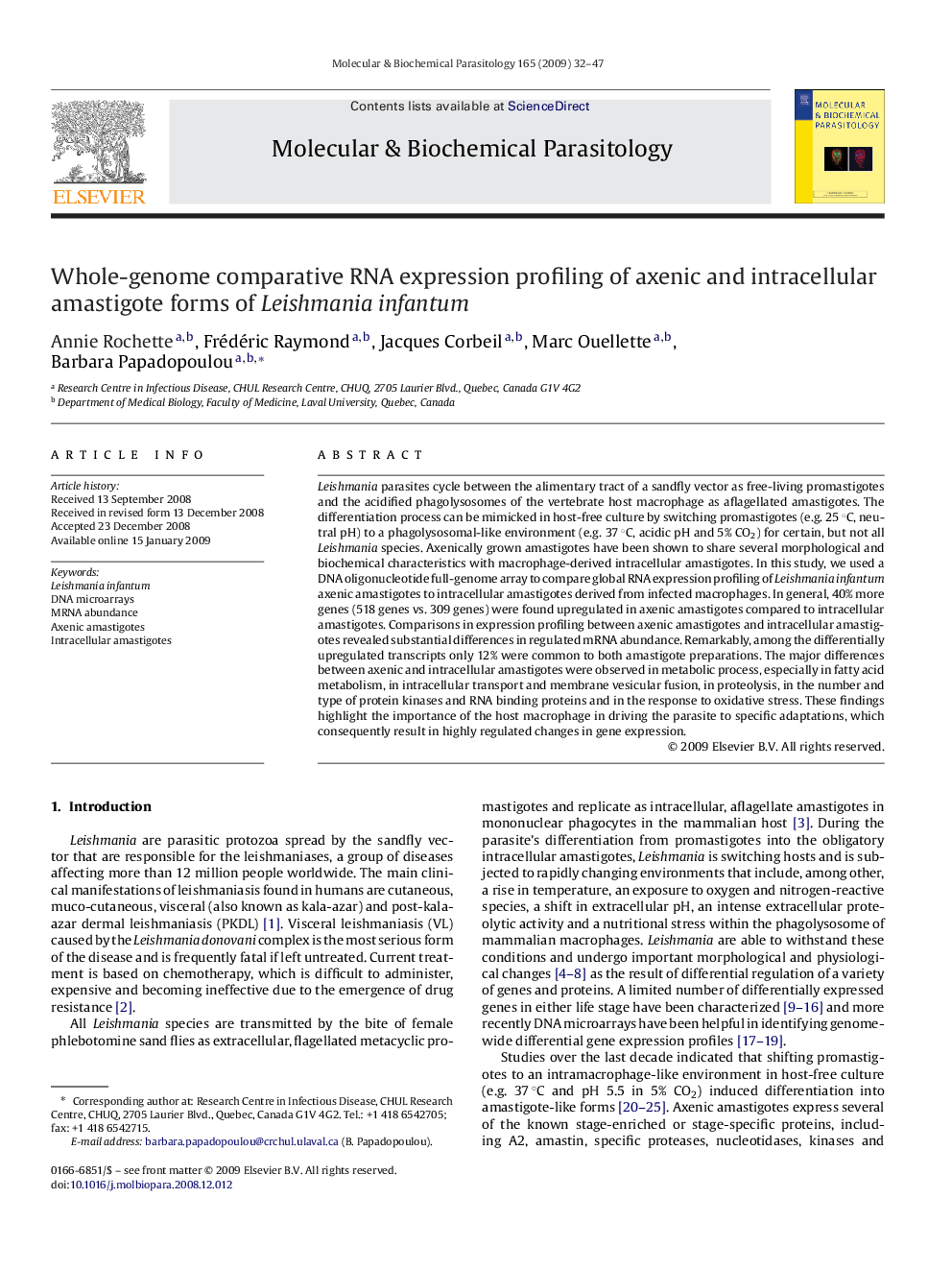| Article ID | Journal | Published Year | Pages | File Type |
|---|---|---|---|---|
| 2830031 | Molecular and Biochemical Parasitology | 2009 | 16 Pages |
Leishmania parasites cycle between the alimentary tract of a sandfly vector as free-living promastigotes and the acidified phagolysosomes of the vertebrate host macrophage as aflagellated amastigotes. The differentiation process can be mimicked in host-free culture by switching promastigotes (e.g. 25 °C, neutral pH) to a phagolysosomal-like environment (e.g. 37 °C, acidic pH and 5% CO2) for certain, but not all Leishmania species. Axenically grown amastigotes have been shown to share several morphological and biochemical characteristics with macrophage-derived intracellular amastigotes. In this study, we used a DNA oligonucleotide full-genome array to compare global RNA expression profiling of Leishmania infantum axenic amastigotes to intracellular amastigotes derived from infected macrophages. In general, 40% more genes (518 genes vs. 309 genes) were found upregulated in axenic amastigotes compared to intracellular amastigotes. Comparisons in expression profiling between axenic amastigotes and intracellular amastigotes revealed substantial differences in regulated mRNA abundance. Remarkably, among the differentially upregulated transcripts only 12% were common to both amastigote preparations. The major differences between axenic and intracellular amastigotes were observed in metabolic process, especially in fatty acid metabolism, in intracellular transport and membrane vesicular fusion, in proteolysis, in the number and type of protein kinases and RNA binding proteins and in the response to oxidative stress. These findings highlight the importance of the host macrophage in driving the parasite to specific adaptations, which consequently result in highly regulated changes in gene expression.
